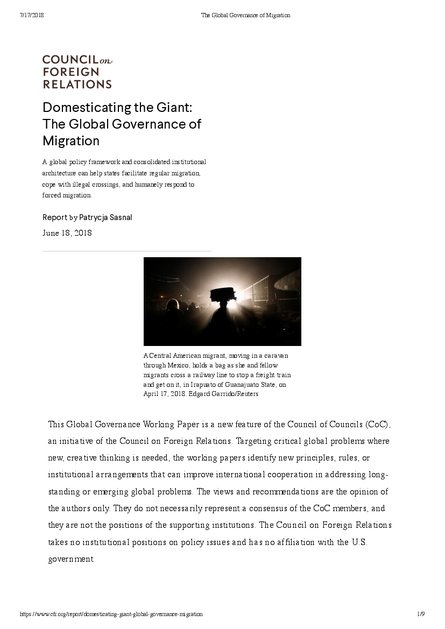
Migration is a natural and defining phenomenon of the globalized world. The challenge of governing migration lies in its inevitability, volume, and heterogeneity. As a portion of the global population, migrants represent around 3 percent, but their absolute number is rising. There were 170 million migrants in 2000; today there are roughly 260 million. Migration levels will certainly grow while hostilities continue in the most conflict-ridden regions of sub-Saharan Africa and the Middle East, the global wealth gap persists, climate change aggravates living conditions in many areas, and the poorer half of the globe becomes more populous. Moreover, migration is a complex heterogeneous process. Depending on the cause, duration, and legality, migration can be voluntary or forced (refugees and internally displaced persons, including survival migrants such as climate and disaster refugees), permanent or circular, regular or irregular.
Politically, migration poses a twofold challenge: balancing security and freedom and harmonizing international obligations with domestic laws. Traditional discussion of migratory movements divided the world into the sending global south and the receiving global north. Interests of the former lay primarily in safeguarding the rights of their citizens regardless of immigration status and ensuring remittance flow. Interests of the latter lay in accommodating the “useful” migrants and restricting the rest. With the shifts in global wealth distribution, this division is losing tenacity. Countries that once were sending migrants are also receiving them today.